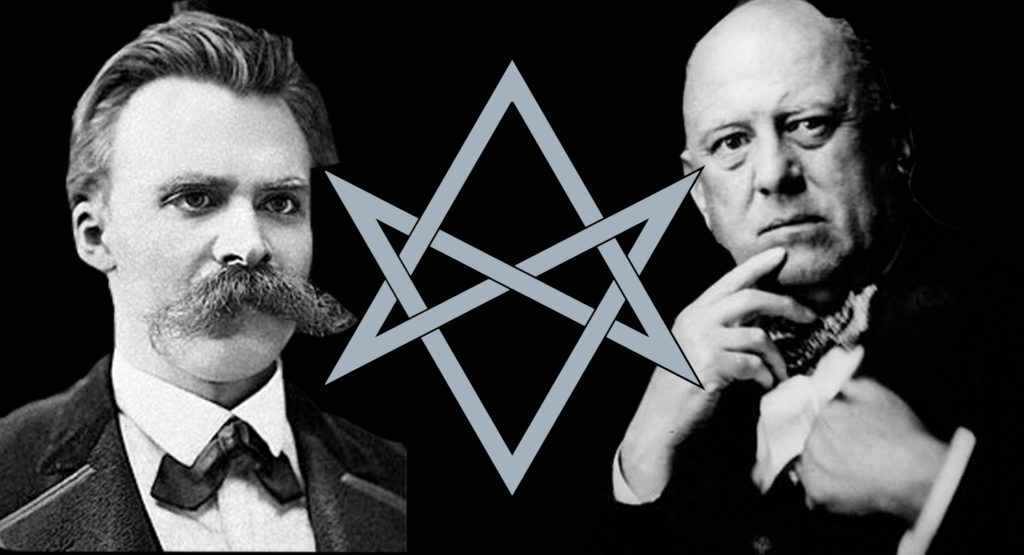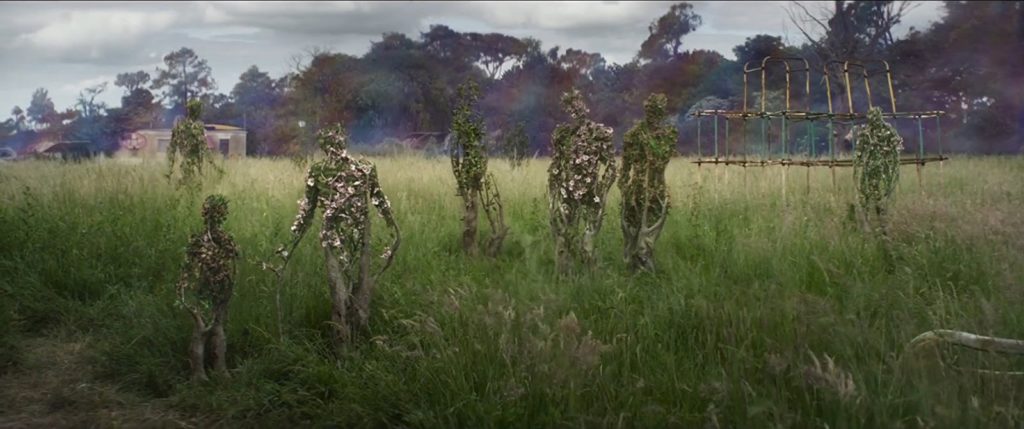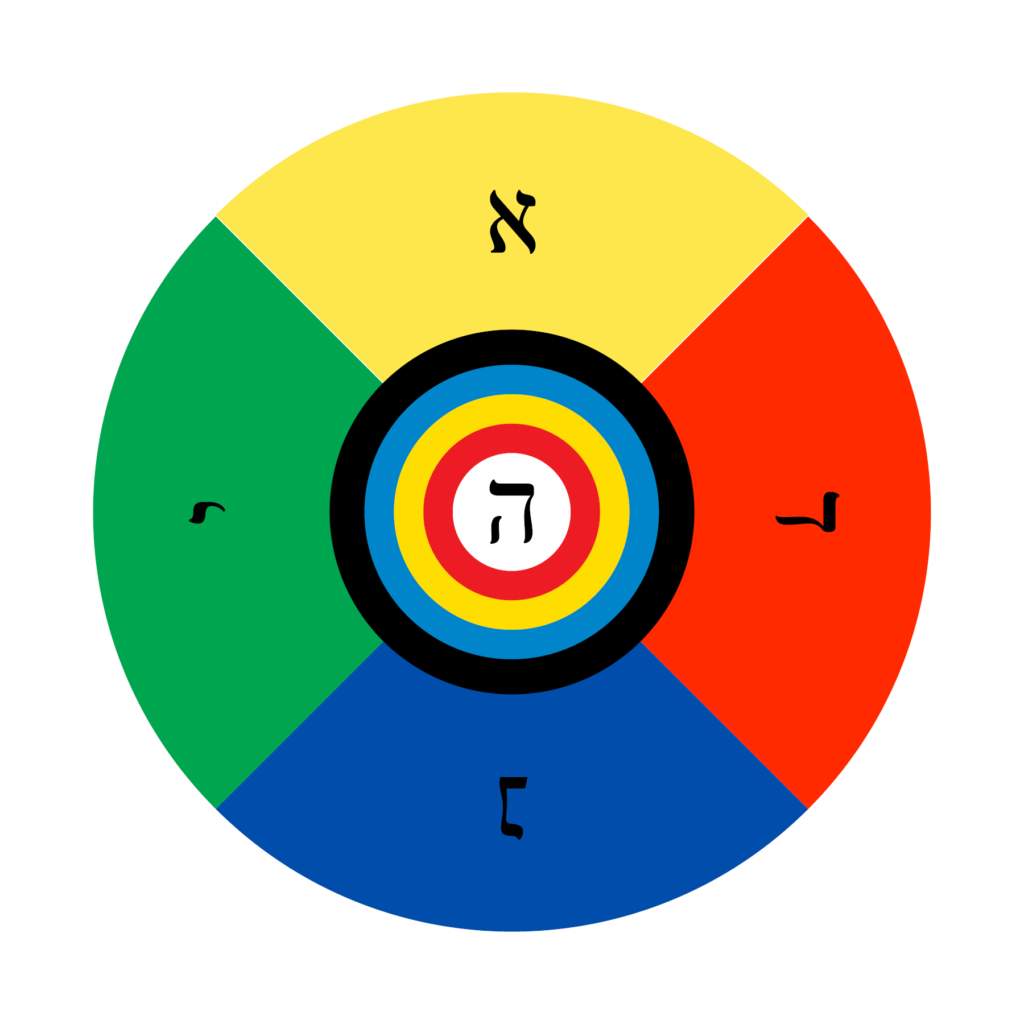
Good grief. Somehow I made it all the way through the latest in Thelemic Union, a refutation of a prior article attacking “postmodern” or completely relativistic interpretations of Thelema.
When I’ve attempted in the past to orient Thelema in, well, any direction, I’ve been accused of having an “Old Aeon” perspective on Thelema, which is really just code for “I don’t like your opinion but am too weak to refute it,” so I am in some respects sympathetic toward the complaints made by Brother Sol-Om-On in the original piece being refuted here.
That being said, the points the author, James Gordon, makes at the beginning of the article are good ones and should be well-taken by anyone who wishes to bring philosophy to bear on Thelema.
Crowley was deeply influenced by Nietzsche. In fact I would say more than any other philosopher, it is Nietzsche who looms over Thelema.
But among other things, Nietzsche is the grandfather of postmodernism. (Martin Heidegger is arguably its father.) It’s difficult taking Nietzsche seriously—and Crowley did—without simultaneously adopting some of the perspectives which would later fall under the label of “postmodernism”.
In fact if I were going to level a criticism at “contemporary Thelema,” I would say that many Thelemites do not take Nietzsche or postmodernism seriously enough. They tend to view Crowley from an overly and overtly modernist perspective.
For example they take the notion of the subject—specifically the autonomous subject—too seriously. They construct a religious perspective—what in postmodern parlance would be called a “metaphysics of presence”—around MY preferences, MY choices, MY sexuality, MY responsibility, etc. This relies on a notion of subjectivity that both Nietzsche and Crowley challenged.
Take for instance the concept of Will, arguably the most important concept in Thelema. Will is not identical with your power of choice. In fact Crowley seemed pretty clearly to have been a determinist, i.e., someone who does not believe in freedom of choice. (Yes, I am aware he uses the term “free will” sometimes. Don’t @ me.) Nietzsche held to a similar point of view, regarding freedom of choice to be a fiction invented by the mind to make it appear as though the end result of the battle of many “wills to power” in a person is somehow “mine” in a final, metaphysically-grounded sense.
The desire for “freedom of will” in the superlative, metaphysical sense, such as still holds sway, unfortunately, in the minds of the half-educated, the desire to bear the entire and ultimate responsibility for one’s actions oneself, and to absolve God, the world, ancestors, chance, and society therefrom, involves nothing less than to be precisely this causa sui, and, with more than Munchausen daring, to pull oneself up into existence by the hair, out of the slough of nothingness.
Nietzsche, Beyond Good and Evil
Crowley differs from Nietzsche insofar as he thinks that whatever unfolds within the sphere of the individual is the predestined result of a course chosen outside of time by one’s Holy Guardian Angel or True Self. His perspective here seems to be closer to the monism of Leibniz than Nietzsche’s.
This is the evident and final Solvent of the Knot Philosophical concerning Fate and Freewill, that it is thine own Self, omniscient and omnipotent, sublime in Eternity, that first didst order the Course of thine own Orbit, so that that which befalleth thee by Fate is indeed the necessary Effect of thine own Will. These two, then, that like Gladiators have made War in Philosophy through these many Centuries, art made One by the Love under Will which is the Law of Thelema.
Liber Aleph, “De harmonia voluntatis cum destinia,” as quoted in NC on AL I.57
This is not just a passing opinion or remark on Crowley’s part but has importance for the pinnacle and ultimate goal of his spiritual system, which is something like amor fati or love of fate. So the result is similar to Nietzsche’s, although the philosophical contrivances used to get there are somewhat different.
Be that as it may, the problem with a lot of interpretations of Thelema is not that they are overly “subjective” or “postmodern”. I think from Crowley’s perspective they would not go far enough in that direction. Until the ground under your feet has completely vanished, you’re not really in a position to transcend. Transcendence requires a certain motivation, a kind of urgency or emergency brought about by a deconstruction which the (over-)reliance on “I-me-mine” is in place to prevent.
Nothing but the realisation, born sooner or later of agonising experience, that its whole relation through Ruach and Nephesch with Matter, i.e., with the Universe, is, and must be, only painful. The senselessness of the whole procedure sickens it. It begins to seek for some menstruum in which the Universe may become intelligible, useful and enjoyable. In Qabalistic language, it aspires to Neschamah.
This is what we mean in saying that the Trance of Sorrow is the motive of the Great Work.
Little Essays Toward Truth, “Man”
This gets confusing because Crowley says “magick is the science and art of causing change to occur in conformity with will.” But listen to the talk I gave on this a couple years back. I step through this really carefully. This is not about the primacy or supremacy of willing in the sense of bringing about a state of affairs that you want. It’s about the destruction of that very perspective.
The method of Magick: Love the mode in which Will operates. The method of Magick in this—and in all—Work is: “love under will.”
Djeridensis Comment on AL I.55-56
Magick is ultimately the art of illusion or of what is illusory. Philosophically and spiritually it is concerned with destruction or the destructive quality of speech.
It’s worth keeping in mind that the mystical “center” or “source” of Thelema is not a presence at all but an absence. It is indicated by Harpocrates/Hoor-paar-kraat.
The Author [of The Book of the Law] called himself Aiwass, and claimed to be “the minister of Hoor-Paar-Kraat”; that is, a messenger from the forces ruling this earth at present, as will be explained later on.
“Introduction” to Liber AL vel Legis
At the center and source of Thelema is something of a performative paradox. The Book of the Law, the foundation of all our work, is the speech of the god of silence. Speech or logos is presence par excellance. Yet Harpocrates, conspicuously, can never be made present.
Who worshipped Heru-pa-kraath have worshipped me; ill, for I am the worshipper.
AL II.8
In the Gnostic Mass, a similar idea is expressed in the line, “O secret of secrets that art hidden in the being of all that lives, not Thee do we adore, for that which adoreth is also Thou.”
Keep in mind that Harpocrates is the Silent or True Self. What these passages seem to indicate is that selfhood is not to be understood in terms of presence. You are not there as an object to yourself. (If you were, you would no longer be subject but object.) The presence of oneself is always deferred.
Another way of saying the same thing is that the characteristic mode of being of this True Self is not properly understood as “a being” or a mode of presence but rather as a kind of going or motion. But it is all-too-easy to conceptualize this going as just another form of being present. This leaves out an important facet of motion, which is that it is a form of change or of destruction. Harpocrates is closely aligned with Aleph and the A or Apophis moment of the IAO triad.
…therefore is the knowledge of me the knowledge of death.
AL II.6
Now think of this in the context of Crowley’s numerous pseudonyms, magical and otherwise: Perdurabo, Chioa Khan, TO MEGA THERION, Oliver Haddo, OU ME, etc. Even when he signs his name “Aleister Crowley,” that’s not his legal name. His legal name was always “Edward Alexander Crowley”. Crowley’s literary presence is a play of absence and representation. He’s presenting himself in such a way as to say, “You think you’ve got me, but you don’t.”
And this gets to the second point which comes out in these passages, which is that self-possession—hence true self-governance and autonomy—is impossible, eternally deferred. No sooner have we turned toward the “True Self” than it recedes, vanishes, reveals itself as an absence of speech, by silence. This flies directly in the face of the notion that we can somehow possess or express an “authentic” self through things like preferences or even responsibilities.
As I said in my recent talk on nihilism, Will in Thelema is best understood as a solution to the problem of nihilism. But in order for the will to serve this function, it cannot be a pure, animalistic overcoming of circumstance that simply runs counter to reason. That kind of brutishness is what Nietzsche would have identified as part of the symptomology of nihilism, not its overcoming.
Even if the loss of ground is not known directly and specifically, it’s still felt, and so people look for something to plug the gap. Investing a dictator or a cult leader with divine authority (“metaphysical presence”) is a reactive attempt to do this. But I would argue that the reliance on MY WILL or MY TRUE SELF is a similar manuever.
This is why every time you post something online—whether it’s an article, in a community, or even on your own Facebook wall—suggesting that there’s some reality of Thelema apart from what “what I will it to be,” people start kicking, biting, and scratching. Yet articles like this that present the typical hippy/boomer narrative of Thelema both get hundreds of likes/hearts and are declared to be subversive. How can something receive near-universal adulation but also somehow subvert conformity?
Some person with a Hindu handle (they always have Hindu handles for some reason despite being Caucasian) took issue with one of my previous articles because I presented evidence in support of an interpretation of the Mass against another. I was told that it’s unthelemic to say someone else’s argument is wrong, even if you present evidence in favor of that conclusion.
How precious.
As Ra-Hoor-Khuit said, ” I am Ra-Hoor-Khuit; and I am powerful to protect my servant. Except when someone expresses an opinion too strongly. Then I melt like a snowflake under a hairdryer. Success is thy proof: argue not; convert not; talk not overmuch! Otherwise someone’s feelings might get hurt, and why would you want to do something like that to somebody? That’s really sad. They don’t want to hurt you.”
Obviously the supremacy of the subjective viewpoint is an issue people feel deeply insecure about. Why else would they be so reactive about it?
I didn’t find anything in the latter half of the article that was of interest.
But yes, I would definitely take care when using the word “postmodern” to denigrate some interpretation of Thelema. In my opinion a lot of Thelema is stuck in delusions that I would consider to be quite “modern” in orientation. But as usual, these terms are really blunt and have to be defined precisely to be useful.




